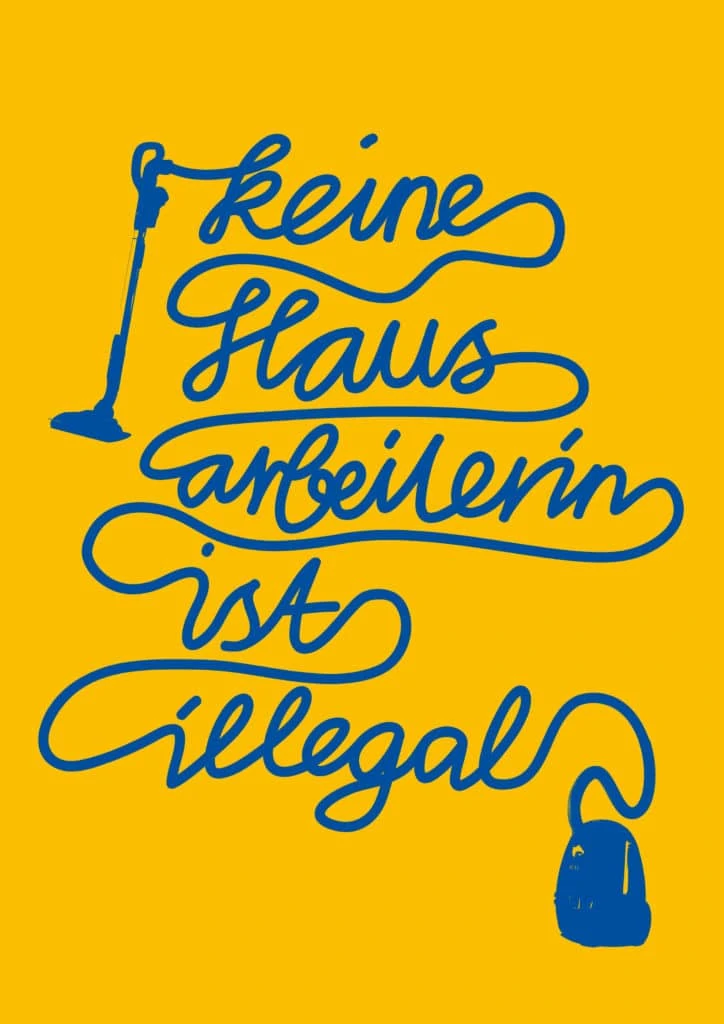To make visible and give a face to the work of housewives without a regular residence status, a working world that lies largely in the shadows: This was the aim of the initiators of the campaign "No female domestic worker is illegal" supported by terre des hommes switzerland with a picture and video competition. The winners have now been chosen.
A blue vacuum cleaner on a golden background whose cable proclaims in coherent writing: "No female domestic worker is illegal. The picture is of captivating simplicity, the vacuum cleaner makes the connection to housework without much fuss, without putting a housewife in the limelight or displaying her. The poster "Vacuum cleaner" by graphic artist Christoph Stettler from the studio stettlerbros.pictures won first prize in the picture and video competition of the campaign No female domestic worker is illegal. With the clip "coup de crayon" Christoph Maridor and his team from Vaud won first prize in the video category.
Precarious working conditions
More than 40,000 women without residence permits clean and work in Swiss households every day. They thus contribute to the prosperity and quality of life of the Swiss population. However, their situation is characterised by precarious working conditions and a lack of social security. They also live in constant fear of being discovered and of sudden deportation from Switzerland.
Making the invisible visible
In order to improve their working and living conditions in the long term, 30 Swiss organisations joined forces last year - terre des hommes schweiz is one of them. The campaign "No female domestic worker is illegal", launched in March, wanted to give a face to this booming sector, which is hardly noticed. The initiators therefore invited people to take part in a picture and video competition: They were looking for works that deal with the living and working conditions of female domestic workers without a regular residence status.
Touring exhibition planned
A touring exhibition through the most important Swiss cities is currently being planned to present the prize-winning works to the public. In addition, some of the selected works submitted will be used for the public relations and lobbying work of the campaign (posters, postcards, Internet, press cinema, TV).


